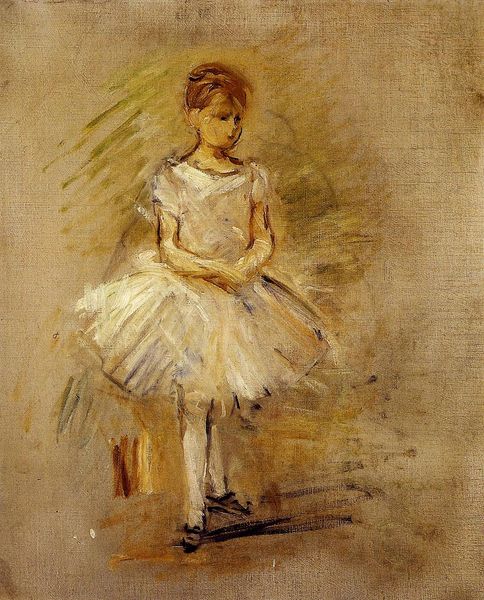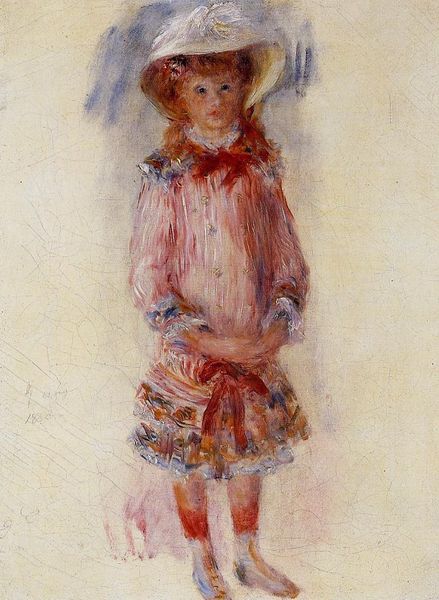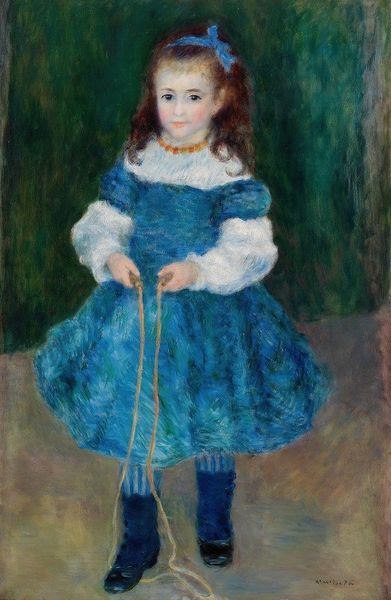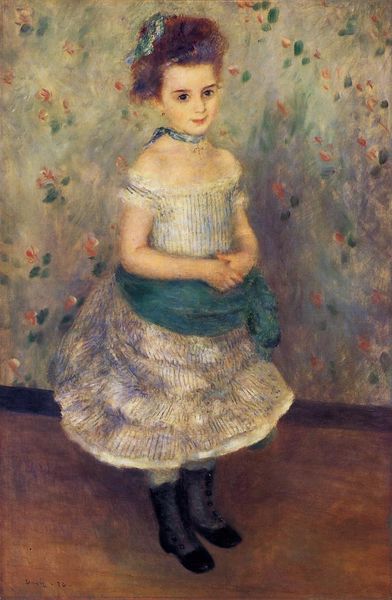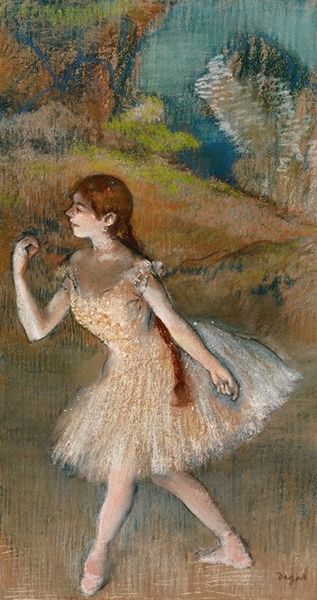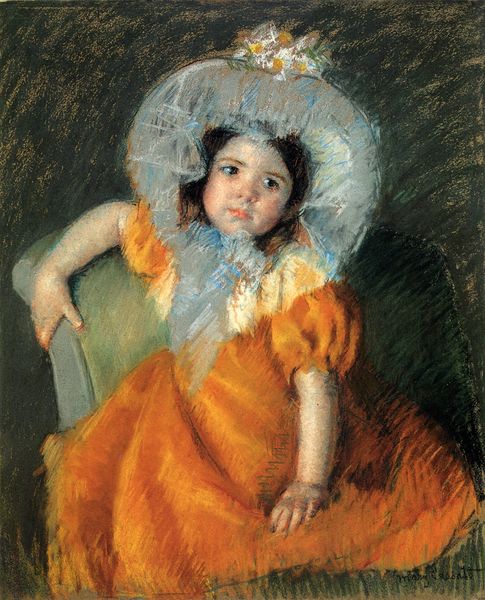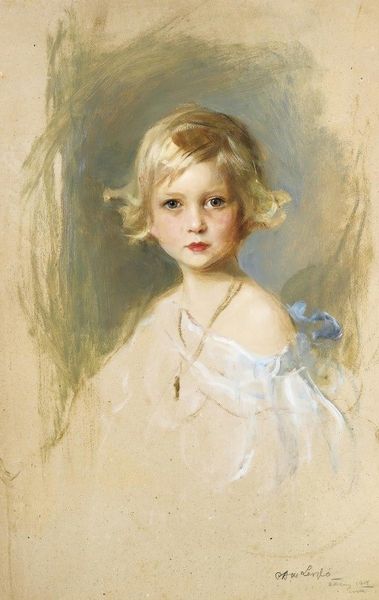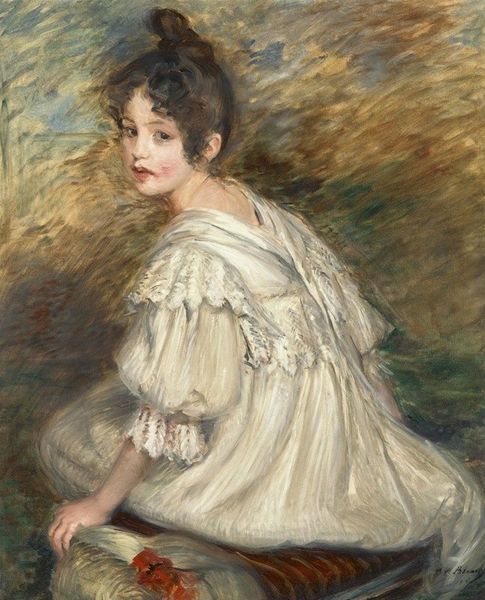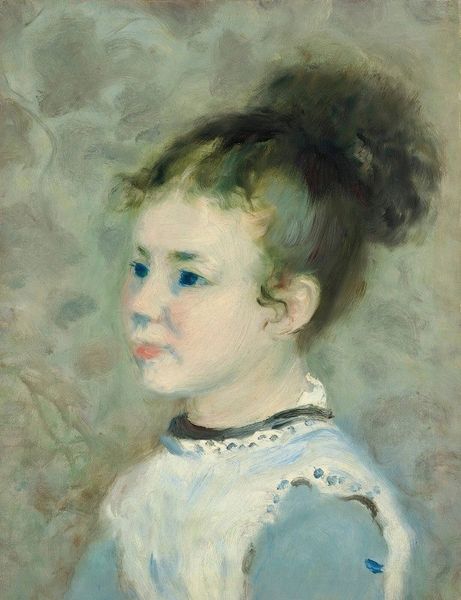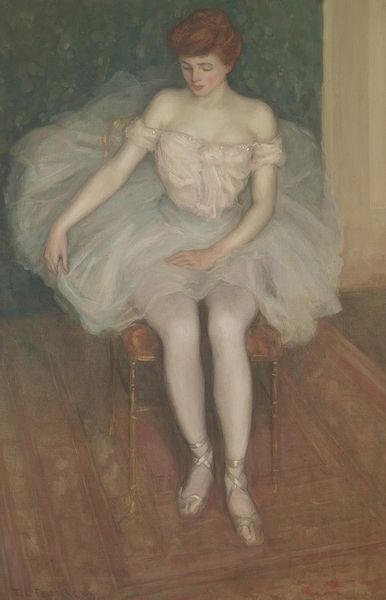
painting, oil-paint
#
portrait
#
figurative
#
painting
#
impressionism
#
oil-paint
#
figuration
#
genre-painting
Copyright: Public Domain: Artvee
Editor: This is Renoir's "The Dancer," painted in 1874 using oil paint. I am immediately struck by the ethereal quality of the ballerina's tutu. How do you interpret this work through a formal lens? Curator: Notice how Renoir utilizes color and light to create a sense of movement. The juxtaposition of the soft, blurred edges of the tutu against the more defined form of the dancer's body. He masterfully plays with textures to enhance the optical experience. It presents us with a spectacle of form that alludes to, more than captures, the dance. Do you find the composition balanced? Editor: Yes, it does seem balanced, even though the figure is slightly off-center. It allows the eye to move around the painting, engaging with the negative space. Could the brushwork serve another function besides creating balance? Curator: Certainly. The broken brushstrokes are intrinsic to the Impressionistic style and play a crucial role in suggesting fleeting moments, emphasizing light, and capturing the optical sensations the artist experienced. Consider how the application of paint contributes to the overall expressiveness of the composition. Editor: I never considered the texture's contribution to the optical experience. Looking at the way Renoir blurred the tutu makes me notice how the shape dissolves within light and shadow. Curator: Precisely. Renoir's masterful manipulation of these formal elements elevates the painting beyond a mere depiction of a dancer; it explores how perception functions, while prompting an interest in coloristic balance within art history. Editor: That is indeed an enlightening observation. Thank you for highlighting how form and technique are crucial to appreciating the deeper meaning within Impressionist artwork.
Comments
No comments
Be the first to comment and join the conversation on the ultimate creative platform.


